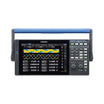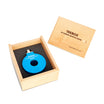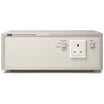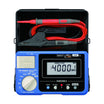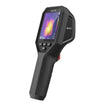
Electric & Hybrid Vehicle Technology
Electric and Hybrid Vehicle Technology Testing
Electrical propulsion is rapidly becoming more or less mandatory to include in every OEM’s vehicle range. Many naming conventions exist for the different vehicle technologies presently available. The main categories are the battery electric vehicle (BEV) and the hybrid electric vehicle (HEV) which also includes an internal combustion engine (ICE). The main difference between traditional powertrain testing and HEV/BEV testing is this addition of one or more electric motors, including inverter technology, battery cooling and the transmission design. The electric motor means new challenges compared to the combustion engine. See our complete application offering within electric vehicles here.
In relation to noise, vibration and harshness (NVH) testing of HEVs and BEVs, there are a number of factors to consider:
- Common electric motor types are the permanent magnet synchronous motor (PMSM), the induction motor and the switched reluctance motor.
- The inverter uses pulse width modulation (PWM) technology to transform high-voltage DC battery power into 3-phase AC voltage for the motor. Switching frequency and sidebands may be in the audible range.
- A gearbox for a BEV, typically, has one and final gear which means that this gear must handle the complete rpm range. A possible transmission error is important to detect, and some suppliers lack sufficient automotive experience.
- Water or air cooling/heating is necessary for the battery system to run. Furthermore, contactors to connect the high-voltage battery creates an impact noise at start-up/shutdown, which can be very disturbing.
- Some BEVs have a range extender (RE). This is an auxiliary power unit and generator for charging the battery without access to an electrical supply.
Learn more about the challenges and how to select the right microphone
Selected products
- GRAS 146AE
The ideal, free-field microphone for almost all acoustic NVH testing - GRAS 147AX
Best suited for situations where space constraints will limit the use of a standard measurement microphone - GRAS 42AG
The ideal solution for calibration
Resources
ACOUSTIC TEST TYPES WITHIN ELECTRIC AND HYBRID VEHICLE TECHNOLOGY TESTING
A number of acoustic test principles are general regardless of the propulsion, but especially electric motor testing and computer model validations need more effort when it comes to BEVs and HEVs. The noise level from the electric motor is much lower, and the tonal noise contains much higher frequencies compared to an ICE. This is mostly noticed while driving at low speed. The dominating sound from the electric motor is the magnetic sound, which generates a whining noise, sometimes called “tram noise”. Noise is also important at regeneration (coast down with battery charging). The control system, i.e. the inverter causes other frequencies. A vehicle running only with the help of the electric motor results in less auditory masking effects at low frequencies, and this means that other requirements for component noise must be changed accordingly. Other new sounds are also introduced such as component noise and water or air cooling/heating for the batteries. A BEV requires electrically-driven accessories like an A/C compressor instead of belt-driven systems for ICE. The A/C compressor can also run during charging to cool down the battery.
BEV and HEV testing
Gearbox whining noise testing is done with similar procedures as for the gearbox for an ICE engine. Tests in a drivetrain test rig, sound power and vibrations, and vehicle tests are performed on a NVH chassis dynamometer.
A range extender has to be analyzed as appropriate depending on type. This component will obviously operate independently of driving speed, which is currently an unusual experience for the driver.
Example
Vehicle interior magnetic noise and transmission noise is analyzed as sound pressure level (SPL) and electric motor orders. The order level versus background noise, especially above approx. 1 kHz, is important. The whining can also be analyzed by use of some of the methods for tonality. To this end, it is essential to have access to the electric motor specification to know the main magnetic orders. The inverter noise as well as switching frequency and sidebands can be analyzed using e.g. fast Fourier transform (FFT) maps.
Computer model validation
A lot of the design decisions and verifications are done before any prototype part or vehicle is manufactured. The computer-aided engineering (CAE) models need to cover electric motor control systems and the vibroacoustic behavior of the motor as well as the vehicle. Measurements from existing cars or systems are used to correlate the simulations. Mule vehicles (existing cars modified with new concepts) are also used. Correlation tests include operating tests, source strength and transfer functions.
Generally, modal analysis and transfer functions, noise transfer functions (NTF) and acoustic transfer functions (ATF), are measured. Furthermore, impact hammer, shakers and volume velocity sources or the actual component are used for excitation. For prediction and CAE correlation, electric motor surface radiation (sound power) is important and the standardized vehicle verification tests are also used for CAE model verification.


